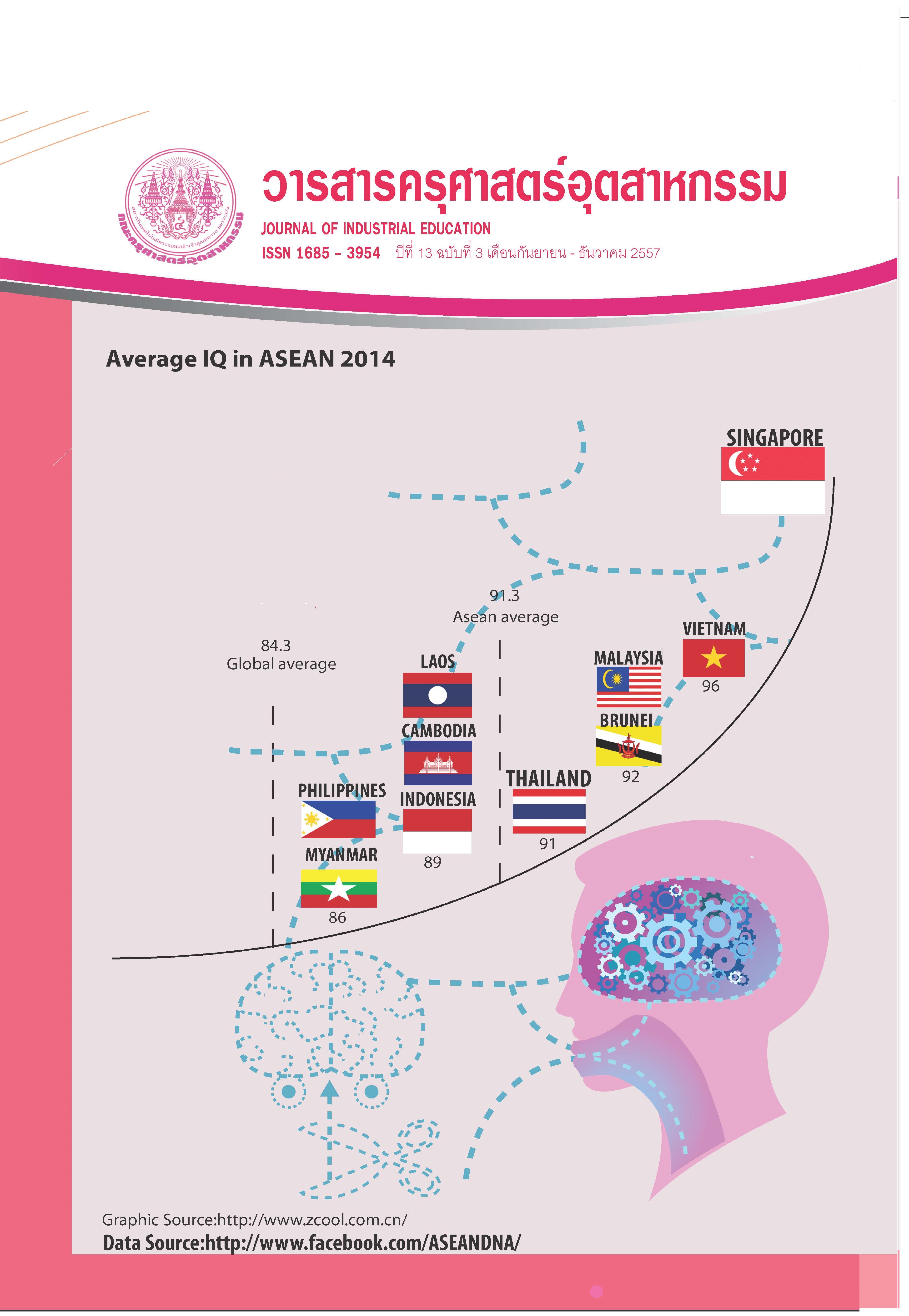The Results Of Using Online Lessons On “The Creation Of Animation” For Matthayom Sueksa Three Students
Main Article Content
Abstract
In this experimental research inquiry, the researcher develops. 1) online lessons on “The Creation of Animation” designed to satisfy the standard efficiency criterion. The researcher also compares. 2) the academic achievement between a group of students instructed by online lessons and a group instructed by traditional methods. The research population consisted of three classrooms made up of 105 Matthayom Sueksa Three students enrolled at Loisaianuson School, Bangkok Metropolis in the academic year 2013. Using the cluster random sampling technique of drawing lots, the researcher selected 60 students. These students were divided into two groups of 30 each. The 30 members of the experimental group were instructed using the online lessons developed by the researcher and the 30 members of the control group were instructed using traditional methods. The instruments of research consisted of 1) online lessons on “The Creation of Animation” for Matthayom Sueksa Three students constructed with the goal of satisfying the set efficiency criterion of 80/80; and 2) a 40-item objective test with four-choices with only one correct answer used to measure academic achievement couched at the reliability level of 0.854. Findings are as follows: 1) It was determined that the online lessons constructed by the researcher satisfied the set efficiency criteria at 84.66/85.50. 2) The academic achievement on the students of the experimental group instructed by online lessons was higher than that of the students instructed by traditional methods at the statistically significant level of .05.
Article Details
"The opinions and contents including the words in papers are responsibility by the authors."
"ข้อคิดเห็น เนื้อหา รวมทั้งการใช้ภาษาในบทความถือเป็นความรับผิดชอบของผู้เขียน"
References
[2] บุญเลิศ อรุณพิบูลย์และสุนทร นิศากร. 2547.e-Learning. [ออนไลน์]. เข้าถึงได้จาก:https://www.skb.ac.th/~skb/computor/nectec/0019.html.(วันที่ค้นข้อมูล: 12 มิถุนายน 2554).
[3] ดรุณรัตน์ พึ่งตน. 2545. บทบาท e-Learning.กรุงเทพฯ : TJ Book.
[4] ไพโรจน์ ตีรณธนากุลและคณะ. 2546. การออกแบบและการผลิตบทเรียนคอมพิวเตอร์การสอนสำหรับe-learning. กรุงเทพฯ : ศูนย์สื่อเสริมกรุงเทพฯ.
[5] Knowles, Malcolm S. 1975. Self-DirectedLearning. A Guide For Learners andTeachers, Chicago. Follett.p.14-18, 61.
[6] สมคิด อิสระวัฒน์. 2541. การเรียนรู้ด้วยตนเอง : กลวิธีสู่การศึกษาเพื่อความสมดุล.วารสารครุศาสตร์. 27(1). น.35-38.
[7] ถนอมพร เลาหจรัสแสง. 2547.รายงานการวิจัยการศึกษารูปแบบของ E-Learning ที่เหมาะสมกับการศึกษานอกโรงเรียน.ศูนย์เทคโนโลยีการศึกษา กระทรวงศึกษาธิการ.
[8] วัญญา วิศาลาภรณ์. 2533. การสร้างแบบทดสอบเพื่อการวิจัยและพัฒนาการเรียนการสอน.กรุงเทพฯ : ทิพย์วิสุทธิ์.
[9] เอกชัย ศิริเลิศพรรณา และคณะ. 2556.การพัฒนาบทเรียนผ่านเครือข่ายอินเตอร์เน็ตเพื่อทบทวน เรื่องการเคลื่อนที่แบบโมชั่นทวีน.วารสารครุศาสตร์อุตสาหกรรม, 12(3), น.38-40.
[10] พิศณุ ฟองศรี. 2553. การสร้างและพัฒนาเครื่องมือวิจัย. พิมพ์ครั้งที่ 2.กรุงเทพฯ : ด่านสุทธาการพิมพ์.
[11] ชัยยงค์ พรหมวงศ์ และคณะ.2520.ระบบสื่อการสอน. กรุงเทพฯ :จุฬาลงกรณ์มหาวิทยาลัย.
[12] บุญชม ศรีสะอาด. 2535. การวิจัยเบื้องต้น.กรุงเทพฯ : สุวีริยาสาส์น.
[13] สุรสิทธิ์ วรรณไกรโรจน์. 2544. การเรียนรู้แบบออนไลน์. [ออนไลน์]. เข้าถึงได้จาก:https://www.thai2learn.com(วันที่ค้นข้อมูล: 12 มิถุนายน 2554).

